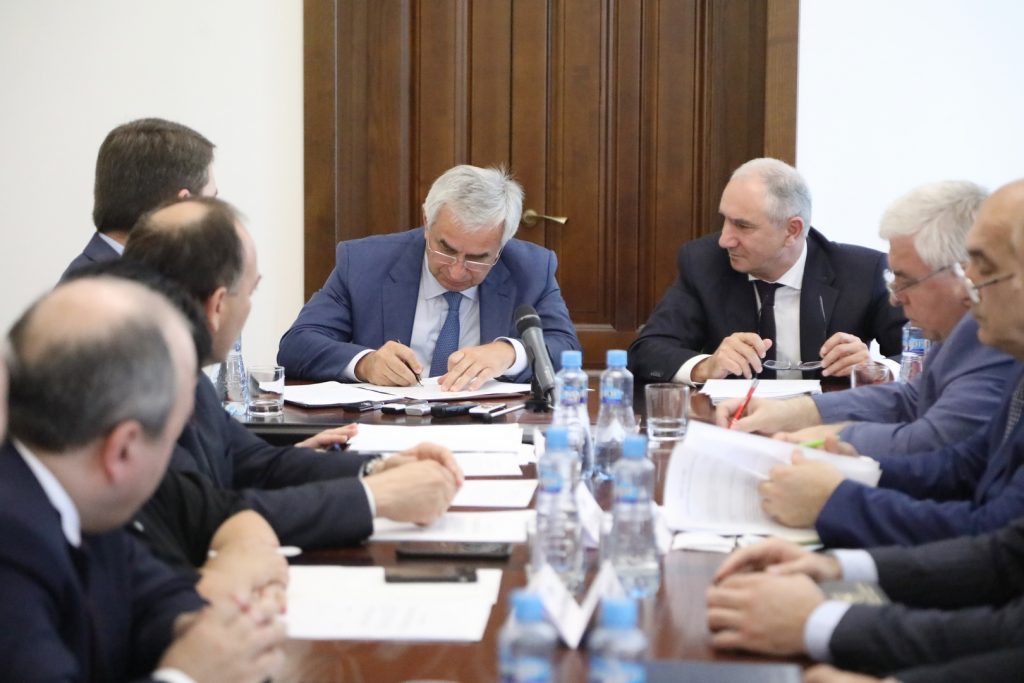The Moscow-backed leadership of occupied Abkhazia issued a decree on July 26 to open the “Vladislav Ardzinba Sokhumi International Airport” for international flights.
According to the Abkhaz “government” decree, the Sokhumi airport was assigned a Russian Federation four-letter code “URAS”, in compliance with the standards of the International Civil Aviation Organization (ICAO), where “U”-stands for former Soviet Union and R – for Rostov (south Russia) airspace control area. The last official ICAO assigned code for Sokhumi Babushera airport was UGSS (where G stands for Georgia).
The “foreign ministry” of occupied Abkhazia, as well as its transport agency has to apply to the Russian Federation for final approval of this code and its inclusion in Russia’s Aeronautical Information Publication (AIP).
On the same day, the Moscow-backed region’s leadership approved another document on designating the Sokhumi airport for joint civil and military use.
What does the code assigned to the Sokhumi airport/Abkhazia airspace mean?
The International Civil Aviation Organization (ICAO) is a specialized agency of the United Nations that adopts standards and recommended practices concerning air navigation since 1944. ICAO assigns special four-letter codes designating airports around the world. These codes are published in ICAO Document 7910: Location Indicators. ICAO codes are used by air traffic control and airline operations such as flight planning, as well as to identify other aviation facilities such as weather stations, area control centers, etc.
The codes have a regional structure. The first letter in the code assigned to the Sokhumi airport – U is referred to the former Soviet countries (except for Moldova and the Baltic states); R – Rostov airspace, also incorporating Russia’s Southern and North Caucasian Federal Districts; A – Abkhazia and S – Sokhumi.
Similar codes have been assigned to the Rostov-on-Don International Airport (URRP), the Grozny Airport (URMG), the Sochi Airport (URSS) and the airports of other cities covered by Russia’s Southern and North Caucasian Federal Districts. So, if Moscow satisfies Sokhumi’s request, Russia will factually recognize the airport as part of its airspace.
Assessments in Tbilisi on Sokhumi’s plans
In response to the Moscow-backed Abkhaz “government’s” plans, the Georgian Civil Aviation Agency (GCAA) released a statement on July 27, noting that “no international flights can be conducted to the Sokhumi airport without Georgia’s consent.”
“Not a single air company will have the right to conduct flights to the Sokhumi airport until Georgia makes the relevant decision and performs oversight on the safety of flights,” it stated.
It also said that by launching flights in the direction of Sokhumi, any air company will violate international norms of civil aviation, as well as the Law of Georgia on Occupied Territories that “will complicate the operation of this air company in international flights and Georgia directions.”
GCAA added that “ICAO has not assigned a four-letter code to the Sokhumi airport. This code should be assigned only through the mediation of an authorized aviation agency.”
Discussions in occupied Sokhumi
The Abkhaz leader Raul Khajimba, who chaired the “government” session on July 26, commented on the plans of integrating the Sokhumi airport into Russia’s airspace.
“Some questions arise about how it will affect our sovereignty. As soon as the issue of decoding was raised, as soon as the words “Rostov” and “Russia” appeared, certain suppositions emerged whether it would mean the loss of sovereignty,” Khajimba said.
He added that “Russia itself recognized us and it is doing its best to ensure that we are established [as an independent state]. It allocates financial aid and creates all necessary conditions for operation of such enterprises on our territory. The question is about strengthening of our ties that will help us accept tourists and investors, as well as improve our budget.”
The government of occupied Abkhazia has long been trying to restore the Sokhumi airport. Sergey Bagapsh, late leader of occupied Abkhazia, announced about the plans on resuming the airport’s operation back in 2006.
Three years later, in 2009, Bagapsh said that the Moscow-backed region’s railway and airport would be transferred to Russia with management rights for ten years. In 2011, Apsnypress news agency reported that Russian airport operator, Novaport, would take over the airport under a long-term lease agreement. It was reported in 2014, a “letter of intent” was signed with Krasnodar-based company Airport Development on “reconstruction” of the airport. Critics noted that the discussion about opening the airport surfaced in the context of ongoing “presidential election campaign” in Abkhazia.
During the de facto government session on July 26, Vakhtang Pipia, chairman of the Abkhaz property management committee, said that the rehabilitation works were underway with the participation of Russian investors.
He also noted that the Sokhumi airport was an important facility and that Sokhumi pins great hopes on both passenger and freight transportation. Pipia also said that without the airport, it would be difficult to develop Abkhazia as “a transport hub.” He added that the resumption of the airport “is only the first step” and that the work “is also underway over a large sea port.”
During the conflict in 1990s, the airport, held by Tbilisi authorities, was targeted by Abkhaz and Russian militias. On September 20, 1993, the civilian aircraft carrying both military and civilian passengers was downed killing 100. The last bodies of the victims were identified and transferred to their surviving relatives in 2014.
Reportedly, the runway was seriously damaged after this tragedy and by the artillery fire. The runway and critical infrastructure were restored by the Russian air force and the flights were confirmed in August 2008, when Russia landed its airborne units in Abkhazia during the war with Georgia.
This post is also available in: ქართული (Georgian) Русский (Russian)

